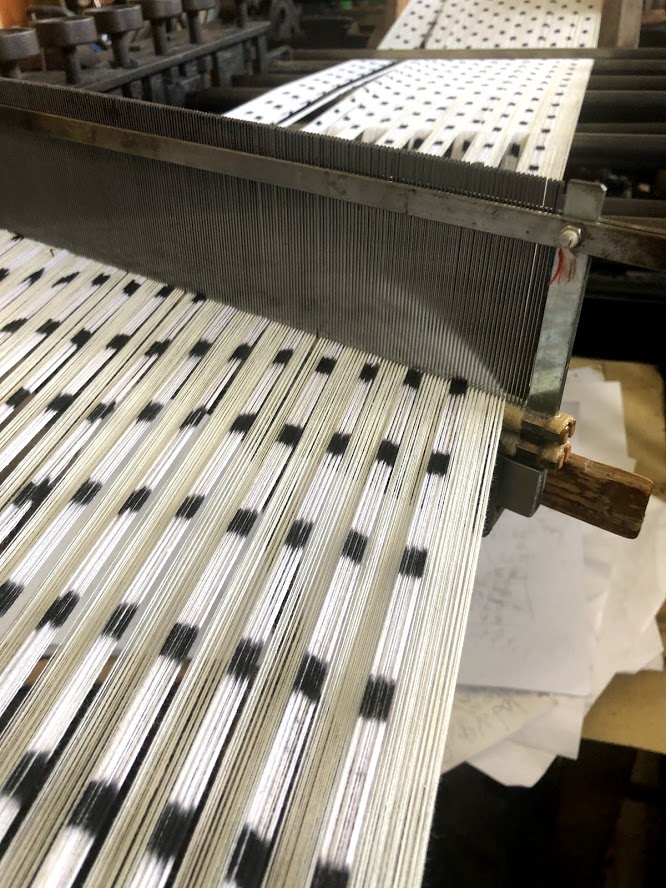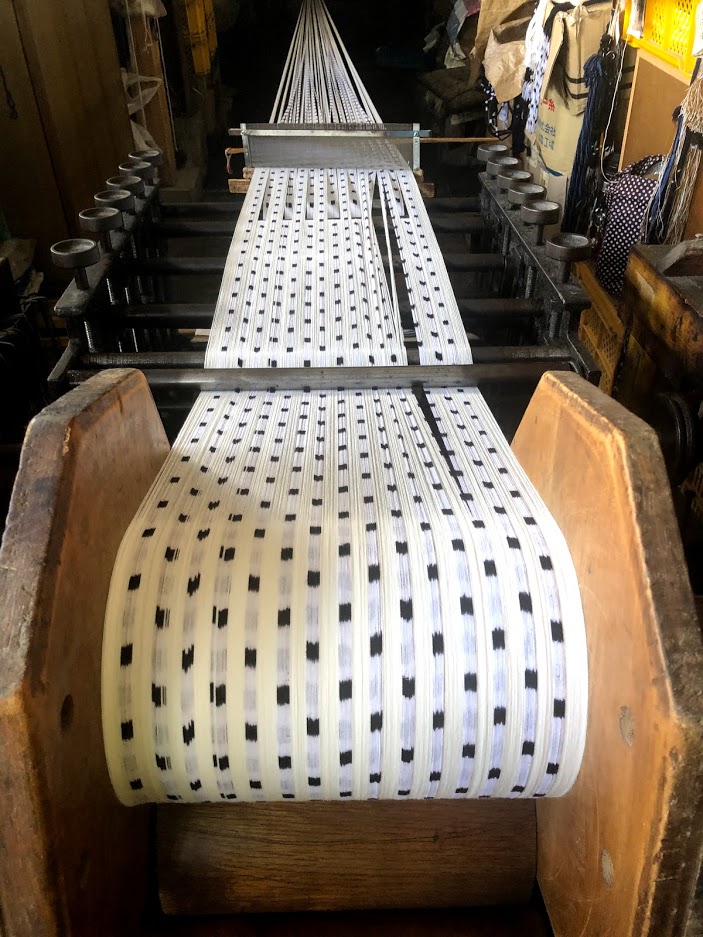
The “Aramaki process” that I have introduced on my blog many times, but this time I will introduce a perspective that I have not touched on so far.

1. Winding width. It is important to adjust the winding width in order to wind the beam (wooden frame) at the top of the photo neatly. If the width is narrow or wide, both ends will be uneven and the pattern will be disturbed. And the more you wind it, the more the tension between the center and both sides will be different and the pattern will be disturbed like a fan.

2, Kanaosa. Kasuri threads and ground threads are arranged (interrupted) on a metal fence (although there are several types such as those made of bamboo). The reason why it faces diagonally is because the winding width is adjusted. It is important to set the winding width properly first.

3, restraint. The entire thread is held down by a round metal rod attached just before winding it around the wooden frame. The main purpose is to even out the tension. A part of the Kasuri pattern from Kanaosa is raised in a triangle from the bottom by a technique called “Gunoma”, and just before winding it, the pattern is kept exactly the same tension and wound.
Shimogawa-Orimono
E-MAIL info@oriyasan.com
URL oriyasan.com
instagram http://instagram.com/shimogawakyozo/
facebook https://www.facebook.com/shimogawaorimono
Twitter @kasuritter
Tumblr kyozoshimogawa
YouTube https://www.youtube.com/channel/UCOZennIqkscFGNJLwnTOyKg